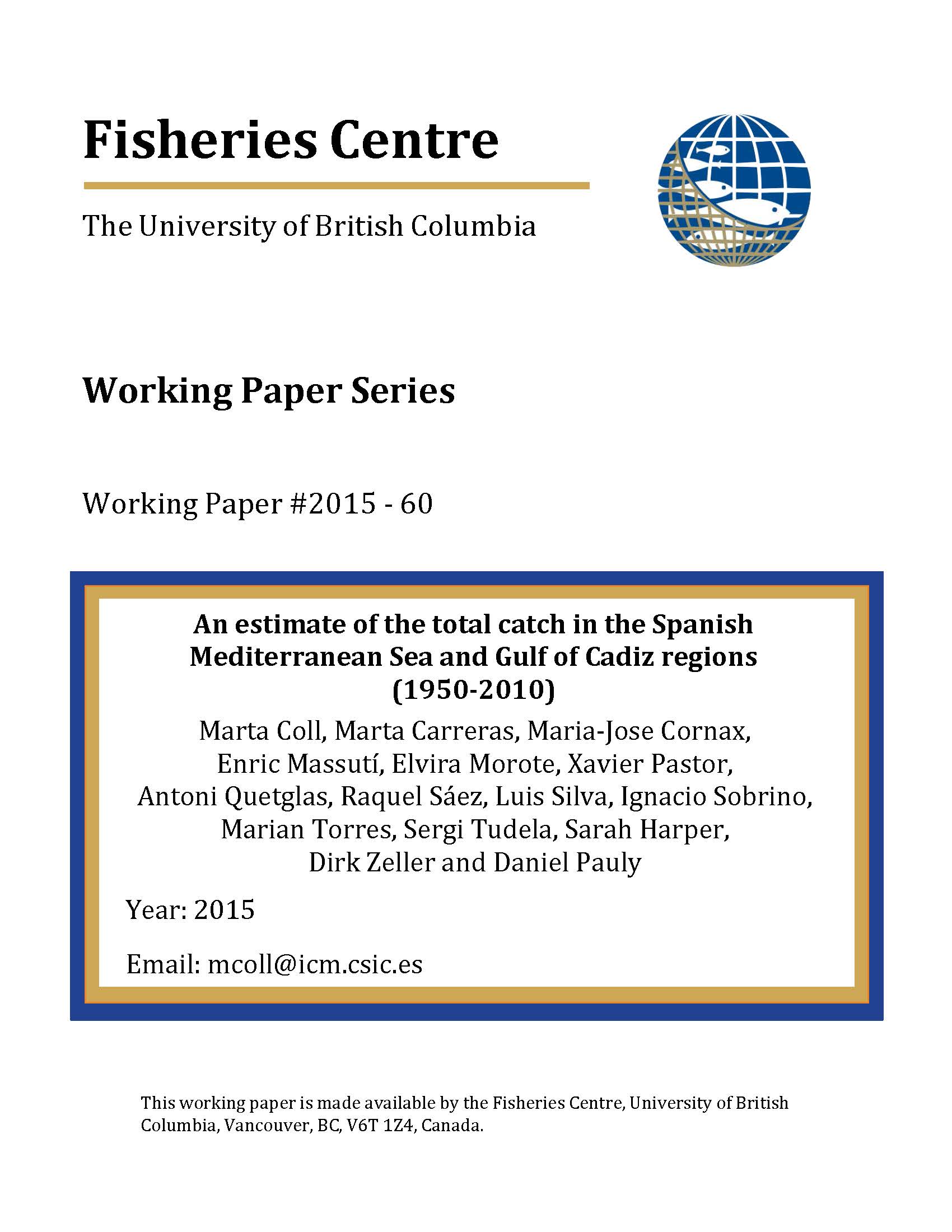Report | July 20, 2017
An estimate of the total catch in the Spanish Mediterranean Sea and Gulf of Cadiz regions (1950-2010)
The underestimation of fisheries removals is a global issue that spans countries from different continents and different socio-economic situations. Underestimation of catches is especially important in countries where fishing fleets are highly diversified, the enforcement of fishing management is low, data availability is poor, and there is high demand for fish products in local markets. This is the case for Mediterranean countries. Here, we estimated total removals of marine resources by Spain from 1950 to 2010 for the Spanish Mediterranean Sea and Gulf of Cadiz regions following a catch-reconstruction approach. We first collected information from scientific publications, grey literature and secondary sources of information (i.e., personal communications, interviews with managers and fishers) to complement officially reported catch data, which are publicly available from FAO databases and from national and regional statistics. A literature search and fishers interviews provided assessments of missing catch sectors that are time-point estimates. These were used as anchor points of reliable data upon which we then estimated total catch using interpolation to fill in the periods for which quantitative data were missing. Overall, the reconstructed catch was 70% larger than the nationally reported data for the same time period. Results illustrated that unreported removals and discards represent important portions of total removals in the study area. Unreported landings and discards accounted for, on average, 42% of total removals between 1950s and 2010, and were composed of black market sales, subsistence fishing, artisanal fishing, recreational fishing and illegal catch, in addition to discarding. By the late 2000s, recreational fishing was the most important sector for unreported landings (~36%), followed by black market sales (~32%), subsistence fishing (~17%), unreported artisanal fishing (~12%) and illegal catch (~2%). While FAO landings data showed an increase of landings from 1950 to the mid-1960s and a decline from the mid-1970s to 2010, a different trend emerged after accounting for all fisheries removals. Reconstructed total catches revealed an earlier maximum of total removals in the late 1950s, a plateau being reached during the 1960s and 1970s, and a decline from the early 1980s to 2010. Our estimates of total fisheries catches represent an improvement over official catch data, and suggest a different historical trend of marine resource use.


